Part of a series about the charitable reuse centres operating in Halton Region.
Waste audits have shown that 7% of the materials found in Halton’s residential garbage stream are textile materials that could be salvaged through reuse centres. This number may not seem like a lot, but if each of the more than 180,000 households in Halton were to reduce their garbage by 7%, it could significantly extend the lifespan of our landfill!
Wastewise is dedicated to waste diversion through its successful operations.
I had the opportunity to meet with Debbie Smart to discuss how Wastewise operates, and how it benefits the local community.
LP: Tell me a bit about Wastewise.
 DS: Wastewise is a local charity that is dedicated to promoting the reduction, reuse, and recycling of waste generated in Halton Hills through the operations of a reuse centre. Our focus is to divert materials from the landfill, and in turn support our community. Our location is one of the few locations in Halton Hills where residents can drop off of textiles, paper, scrap metal and electronic waste in one convenient stop.
DS: Wastewise is a local charity that is dedicated to promoting the reduction, reuse, and recycling of waste generated in Halton Hills through the operations of a reuse centre. Our focus is to divert materials from the landfill, and in turn support our community. Our location is one of the few locations in Halton Hills where residents can drop off of textiles, paper, scrap metal and electronic waste in one convenient stop.
Our thrift store is unconventional, to say the least. We attract people who are ready for a search, and know that they will find something great. Wastewise is very much a part of the community here in Georgetown and it is not unusual for us the see neighbours stop and chat or new friendships form while people are shopping and recycling. We are known in the community as a central location to responsibly dispose of salvageable textiles, e-waste and other recyclable material so we recognize a lot of our customers as they are frequent visitors. This has helped us build a strong relationship with our customers, and our thrift store allows many members of the community to obtain good quality materials at an affordable cost.
In the past, our focus has been solely on waste management, recently though we have expanded our patent to encompass environmental sustainability. We are realizing that in order to make a change in waste reduction and management, we need to look at the bigger picture.
LP: In what ways does Wastewise give back to the local community?
DS: We have been very involved with the local community since we began our operations in 1991, and are involved in a number of great initiatives! Financially, we support each of the three high schools here in Halton Hills by providing a $1,000 scholarship to a graduate pursuing environmental study. In 2011 we gave $5,000 to POWER Halton, and $5000.00 to GDHS to help support the E.A.R.T.H. programme. Recently we have collaborated with the Town of Halton Hills to provide funds to start a public space recycling program which you will find in all local parks and recreation areas. We support community involvement among our youth by offering volunteer opportunities for the required 40 hours and by supporting green clubs at various schools, and in one instance we provided funds to reward the students with a pizza party for their hard work.
We provide many organizations in the community with textiles as well such as blankets and pillows for the Humane Society. We work closely with the Holy Cross Helps Program, the local fire department when they require materials for controlled burns, and provide affordable classroom materials for teachers and daycares. We also provide reduced rates for international farmers to bring textiles home for their loved ones.
LP: When did the reuse program start?
DS: Wastewise was started in 1991 by a group of local residents in response to a proposal for a landfill development in Halton Hills. The group, known as FOAD (Furiously Opposed Acton Dump) realized they cannot just say ‘we don’t want this’ and not take any action to prove a landfill is not required. FOAD realized that the community could do something with our waste other than send it to landfill. At the time, there was no place in Halton Hills to bring good, usable items. Basing their idea of Urban Ore, FOAD proposed the idea of a donation and reuse centre, received funding from the government, and Wastewise was opened.
LP: What kind of materials do you accept?
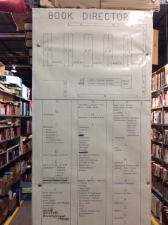
This directory helps customers find books for sale.
DS: We accept all sorts of items! We accept almost all reusable household goods for donation – books, puzzles, board games, kitchenware, small appliances, collectables, paintings, and textiles which includes purses, shoes, boots, pillows, linens and of course clothing. . Residents can also drop off electronic waste (TVs, monitors, printers, phones, etc.) to have them safely recycled.
If there is anything that we cannot accept, we redirect residents to locations that we know can take those items for responsible disposal.
LP: How are the materials processed?
DS: Residents who donate materials bring them to the facility, and they are sorted in the back section of our warehouse. Most of our sorting is done by a great group of volunteers. All of the items are organized into various categories. We regularly receive items that we know will interest our varied customer base and generate more revenue to sustain the centre, these items may be assessed by knowledgeable persons and placed in the Wastewise silent auction.
LP: Do you ever receive materials that Wastewise doesn’t need? If so, what happens with those materials?
DS: We do our best to stop items we do not need from entering the facility, but it is inevitable that stuff gets dropped off that we cannot accept. As an example, the other day, two mattresses were left outside our doors. In that case, I had to load the mattresses into my personal vehicle, bring them to the transfer station, and pay the fee for disposal. While zero waste is an amazing goal, we realize at a thrift shop, that is not a reality for us. We do have a garbage bin that we put non-recyclable material in such as broken glass and plastic. This bin is picked up once a week, and we incur a cost to have that garbage material collected.
We know that it costs money to be in this business and dispose of waste responsibly (reuse, recycling, and garbage materials), but we do our best to keep waste low. Even when residents come in, we try and promote waste reduction (for example, promote reusable coffee cups and water bottles versus disposable alternatives).
LP: In what ways can residents get involved or contribute to Wastewise?

The game section at Wastewise.
DS: If residents want to get involved, we are always looking for volunteers! Our volunteers help sort donated items such as books and clothing, test electronics, and can ensure our facility is operating effectively. In addition interested residents may apply to become a board member.
Residents can also contribute to Wastewise by donating or shopping here! We receive so many great items, and residents leave with affordable, unique finds. We like to say “Stop here first. If we don’t have what you need, we will help you find it!”
 This blog launched in September 2011, and since then, we’ve published 236 posts about waste management! Who knew there’d be so much to say about waste?
This blog launched in September 2011, and since then, we’ve published 236 posts about waste management! Who knew there’d be so much to say about waste? Here’s the all time, top ten blog posts we’ve published:
Here’s the all time, top ten blog posts we’ve published:



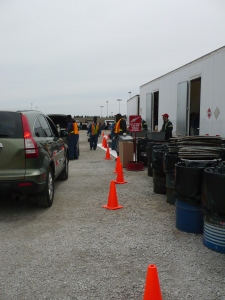



 What words come to mind when you think about Earth? Beautiful, luscious…our home.
What words come to mind when you think about Earth? Beautiful, luscious…our home.




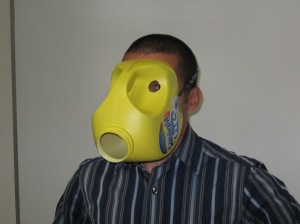










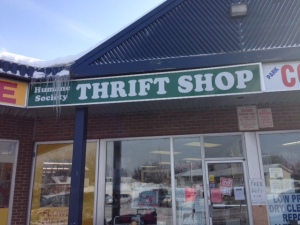







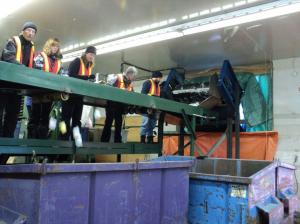

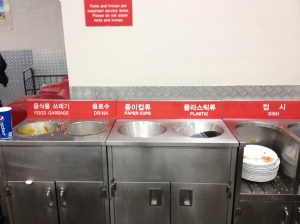







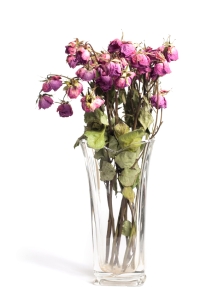

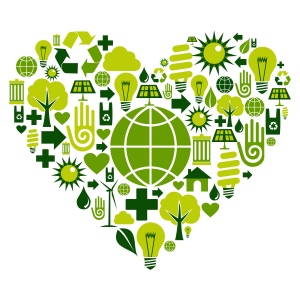




 The best option is to reuse it by passing unwanted LEGO on to someone else. That’s one of the amazing things about LEGO — regardless of whether it is brand new or thirty years old — the pieces are still compatible, they all fit together.
The best option is to reuse it by passing unwanted LEGO on to someone else. That’s one of the amazing things about LEGO — regardless of whether it is brand new or thirty years old — the pieces are still compatible, they all fit together.


 Composting, a stream of organics recycling, is location-specific, which physically ties the process to a limited circumference. This differs from other recycling processes, where materials are shipped away to be used or discarded. The enforced circumference of organics recycling has people at its centre and calls for greater stewardship and communal responsibility over the management of food waste. We don’t have the “luxury” of shipping spoiled food to the south or elsewhere for others to deal with it. This is our responsibility and we need to collectively deal with it here and now.
Composting, a stream of organics recycling, is location-specific, which physically ties the process to a limited circumference. This differs from other recycling processes, where materials are shipped away to be used or discarded. The enforced circumference of organics recycling has people at its centre and calls for greater stewardship and communal responsibility over the management of food waste. We don’t have the “luxury” of shipping spoiled food to the south or elsewhere for others to deal with it. This is our responsibility and we need to collectively deal with it here and now.
















 Studies show that ancient Romans even recycled
Studies show that ancient Romans even recycled And if you visit the movies this weekend, remember to pick up after yourself! Bring your waste home: the paper popcorn bag and waxed paper cup go in the
And if you visit the movies this weekend, remember to pick up after yourself! Bring your waste home: the paper popcorn bag and waxed paper cup go in the 

 Telling the story of the aristocratic Crawley family and their servants during the early 1900s (now in the 1920s), this riveting TV show is part historical record and part sudsy soap opera.
Telling the story of the aristocratic Crawley family and their servants during the early 1900s (now in the 1920s), this riveting TV show is part historical record and part sudsy soap opera.

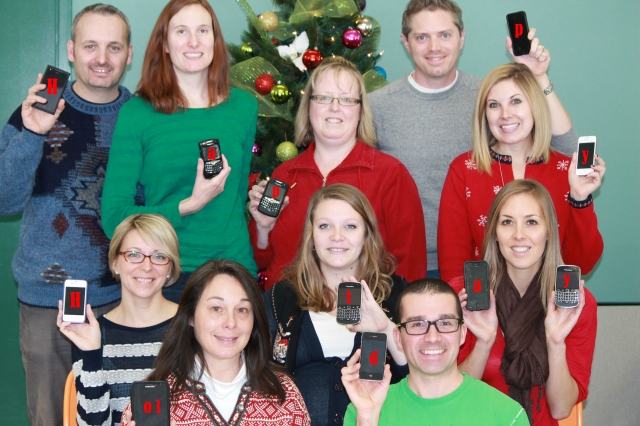
 I admit it: I’m addicted to paper. Books, newspaper, writing paper, computer paper, flyers, brochures — I love it all.
I admit it: I’m addicted to paper. Books, newspaper, writing paper, computer paper, flyers, brochures — I love it all.
 “I’m hoping Santa brings me a new road bike this year, but I don’t think Santa has that kind of budget,” said
“I’m hoping Santa brings me a new road bike this year, but I don’t think Santa has that kind of budget,” said  Ben
Ben “I love
“I love  “I love going to the
“I love going to the 

 During this Christmas season when we see a
During this Christmas season when we see a 












 If you stop to think about it — we rely on plastics a lot in our everyday lives. You wake up and turn off your alarm clock (which is cased in a plastic shell). You brush your teeth with a plastic tooth brush. You wash your hair with shampoo from a plastic bottle. You eat cereal from a plastic bag. Your milk may have come in plastic bags. You drive to school or work in a vehicle with many plastic parts. You sit on chairs with plastic parts. You use plastic pens. Your computer is made out of plastic. You stop for a coffee; the coffee cup lid is plastic. If you buy strawberries in November in Canada, they’ll have to come from far away, which means using a plastic clamshell container to make them easy to transport.
If you stop to think about it — we rely on plastics a lot in our everyday lives. You wake up and turn off your alarm clock (which is cased in a plastic shell). You brush your teeth with a plastic tooth brush. You wash your hair with shampoo from a plastic bottle. You eat cereal from a plastic bag. Your milk may have come in plastic bags. You drive to school or work in a vehicle with many plastic parts. You sit on chairs with plastic parts. You use plastic pens. Your computer is made out of plastic. You stop for a coffee; the coffee cup lid is plastic. If you buy strawberries in November in Canada, they’ll have to come from far away, which means using a plastic clamshell container to make them easy to transport.






 Teacher-Librarian Nicole Hamel at
Teacher-Librarian Nicole Hamel at  Mark Cann, the Teacher-Librarian at
Mark Cann, the Teacher-Librarian at  “I recommend
“I recommend  “I recommend reading National Geographic Kids Human Footprint: everything you will eat, use, wear, buy and throw out in your lifetime by Ellen Kirk. This is a fun book to get kids interested in our impact on the earth,” explained Linda Price, the Library Technician at
“I recommend reading National Geographic Kids Human Footprint: everything you will eat, use, wear, buy and throw out in your lifetime by Ellen Kirk. This is a fun book to get kids interested in our impact on the earth,” explained Linda Price, the Library Technician at  Teacher-Librarian Mary Collett of
Teacher-Librarian Mary Collett of  Teacher-Librarian Sandra Rogers from
Teacher-Librarian Sandra Rogers from 

 My personal journey with food waste started in October 2011, when I heard
My personal journey with food waste started in October 2011, when I heard 
